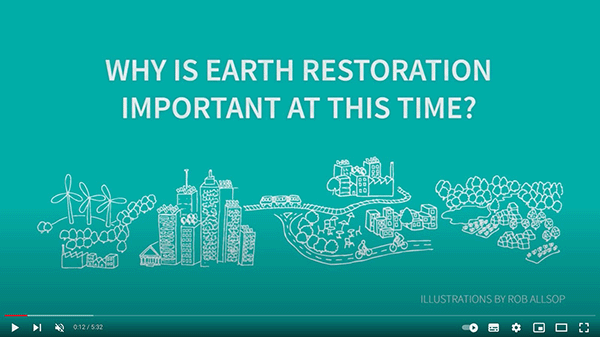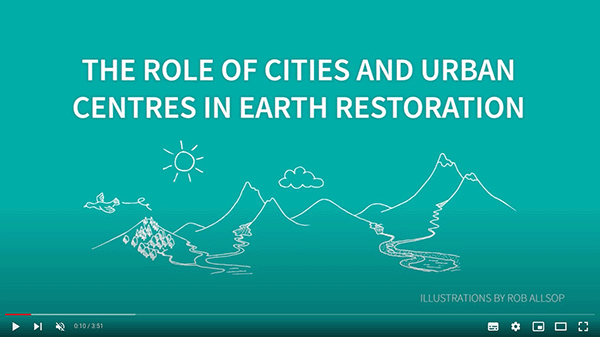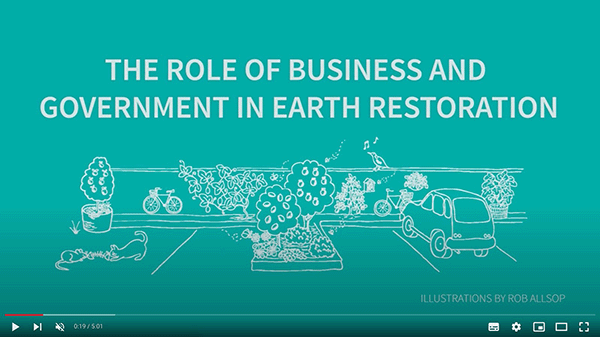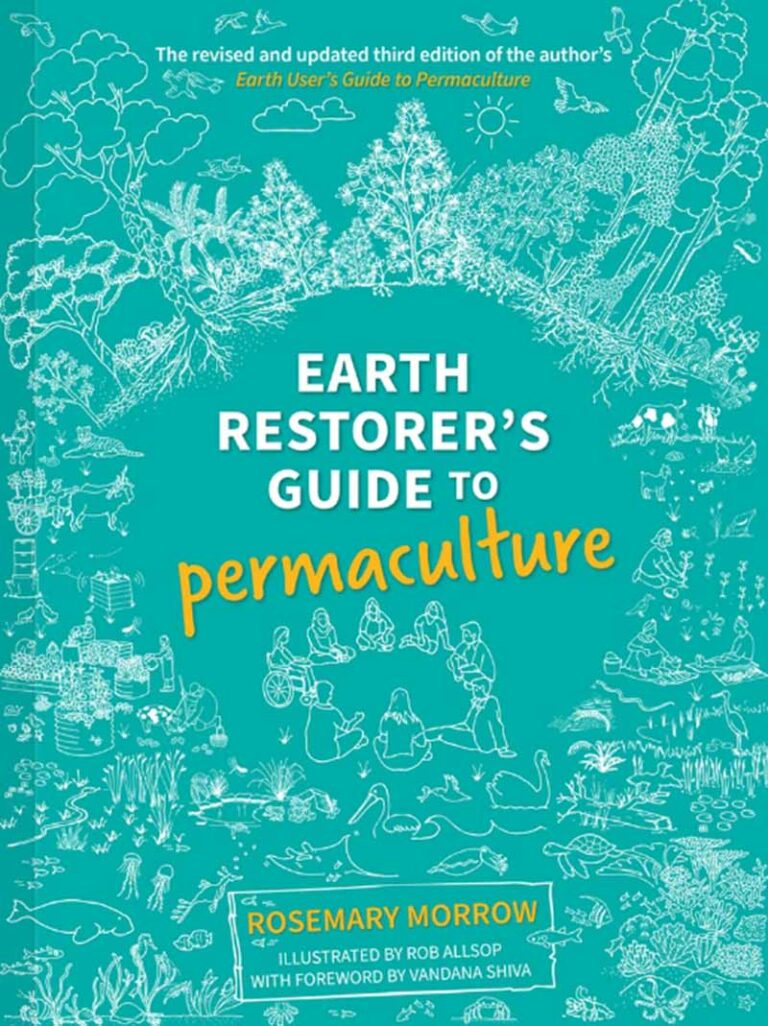
A conversation series with Rowe Morrow
Globally renowned permaculture teacher, author and agricultural scientist.
PART THREE:
The role of business and government in Earth restoration
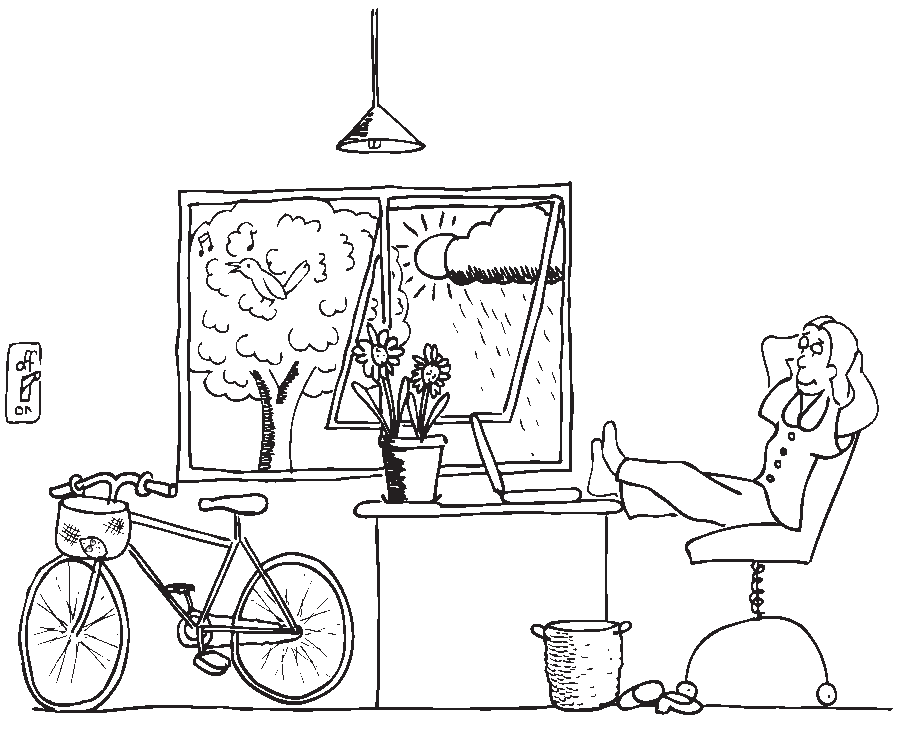
What is the role of business and government in Earth restoration?
How can our business and government processes, systems and practices contribute to the health of our planet?
Rowe offers us four tangible solutions to advocate and act towards:
- Act with money and invest ethically
- Plan long-term for disasters and recovery
- Divest in fossil fuels
- Improve public transport and invest in green infrastructure.
Activities.
Let’s take a closer look at how a circular economy works. In observing the below illustration* from Rob Allsop, we can see how a circular economy keeps materials in use, re-designs waste and regenerates natural systems.
A circular economy, when adopted, transforms industry as we know it.
*Image credit: Earth Restorer’s Guide to Permaculture, Chapter 36: A just economy for all
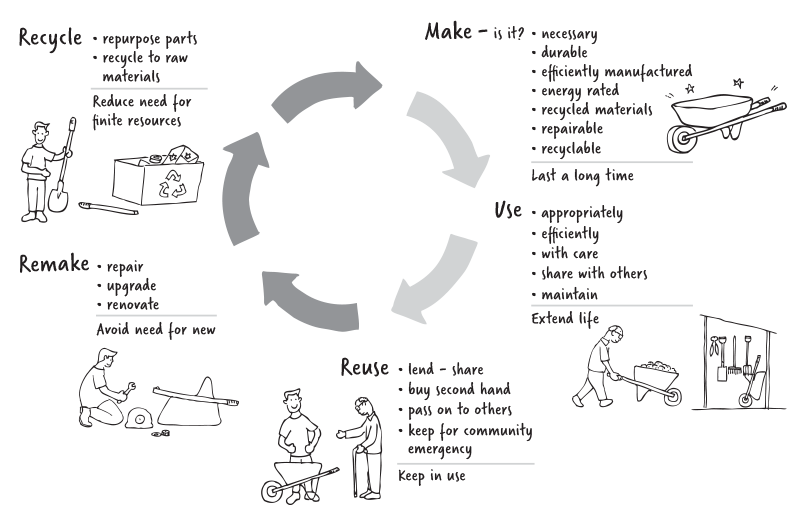
Tangible actions.
As Rowe aptly encourages, “people want to be a part of the solution!”
In observing this illustration identify three tangible actions you can take in your life to contribute to a circular economy.
Use the below prompts to guide you:
MAKE: How can you make or purchase items that last a long time?
USE: How can you extend the life of existing items?
REUSE: What actions can you take to keep things in use?
REMAKE: How can you avoid the need for new?
RECYCLE: What are ways you can reduce the need for finite resources?
Further research and resources.
Kate Raworth has developed Doughnut Economic as a framework for next-economy thinking and building.
Check out the United Nations 17 Sustainable Development Goals (SDGs).
Learn more about Circular Economy from the Australian Circular Economy Hub.
Purchase your copy of Earth Restorer’s Guide to Permaculture HERE.
